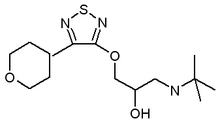This 64-year-old white man has a negative medical and family history for glaucoma. On referral, his intraocular pressures (IOPs) on timolol maleate (Timoptic) were 35 mm Hg and 24 mm Hg. Gonioscopy was normal and the visual field was clear. I graded the optic nerve head cupping at cup-to-disc (C/D) ratio of 0.75V/0.6H OD; 0.5 OS.
The first thing to notice on the patient's GDx is that the right optic nerve is much bigger than the left. One of the more useful aspects of scanning laser polarimetry with the GDx Nerve Fiber Analyzer is being able to view the optic nerves on top of each other to determine differences in size. Patients who have larger optic nerve heads usually have larger cupping and more axons; those with smaller optic nerves usually have smaller cupping and less nerve fiber layer (NFL). In this patient, the optic nerve head was bigger, but I think it's pathologic. With the two modulations on top of each other, you can see that the right eye's NFL is much thinner than that of the left.
This 50-year-old white woman has IOPs of 25 mm Hg and 23 mm Hg baseline and a C/D ratio of 0.0/0.0. Optic nerve head drusen are probably the most common indicator that precludes a true physiologic cup. If this patient has drusen, can she have glaucoma at the same time? I contend that she can.
Some will argue that the NFL loss and the visual field loss stem from the drusen. But if your patient has elevated pressure or any other risk factors and visual field loss as well as NFL loss, I urge you to start prophylactic treatment to lower the pressure and reduce the pressure risk factor.
This patient's visual fields show mostly edge points, but a small scotoma is still visible. A wider field test might help confirm a true scotoma. In cases of drusen, the GDx is quite helpful in establishing a true sense of the quantity of NFL loss.
This 60-year-old white woman's mother has glaucoma. The patient's IOPs are 25 mm Hg and 23 mm Hg, and she has a C/D ratio of 0.4 in the right eye and 0.3 in the left eye. This is a typical inferior nasal/inferior arcuate scotoma.
You'd expect to see an infarct superiorly in the NFL, but this patient's NFL is so heavily myelinated that it caused a localized defect on the visual field.
Other than that one spot, the rest of the NFL looks good. I started this patient on treatment. Pachymetry would be helpful to ensure that increased corneal thickness isn't contributing to the IOP. The Ocular Hypertension Treatment Study results confirm the notion that prophylactic treatment of IOP helps prevent conversion to glaucoma, especially if the corneal thickness is normal or below normal.
This 65-year-old white woman has a history of hypertension and thyroid disorder and is taking lisinopril (Prinivil). Her IOPs are 18 mm Hg and 16 mm Hg. She's been followed for 6 years with 0.8 cups. Her NFL looks fairly symmetrical. The right eye is a little thinner superiorly, but you can tell this patient has significant optic nerve cupping. Optic nerve head photography shows beta and alpha zones of peripapillary atrophy in both eyes. You can't see it as well in the left eye because the ellipse is falling right on it.
In looking at that right optic nerve, you see an optic nerve head hemorrhage - actually several - as well as a notch in the superior neural retinal rim. Eventually, this patient developed visual field loss.
We diagnosed this patient because another doctor had been watching her for 6 years. The visual field had been clear, and the GDx showed no loss. The hemorrhages prompted the doctor to send the patient for further evaluation. I expect this patient to develop further objective NFL and visual field loss.
By Ian Ben Gaddie, O.D.
Louisville, Ky.
Dr. Gaddie practices in Louisville, Ky.
Copyright Boucher Communications, Inc. Oct 2002
Provided by ProQuest Information and Learning Company. All rights Reserved



